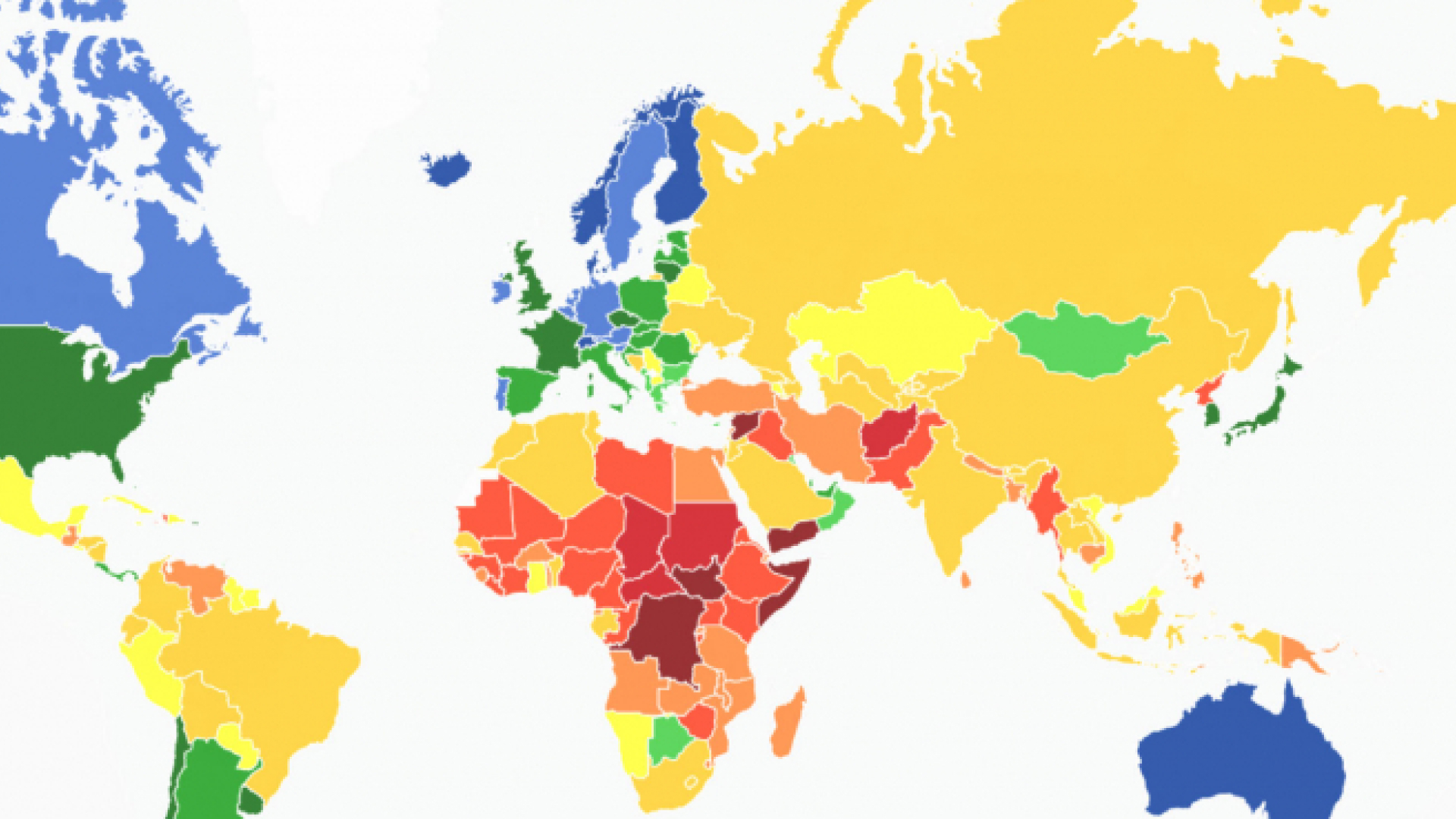Worldwide Fragile States Trends
Since 2005 the NGO, Fund for Peace, posts its Fragile States Index ranking 177 nations on social, economic and political pressures facing 178 countries around the world.
Including 12 primary indicators and hundreds of sub-indicators, the Fragile States Index uses looks at content of millions of documents pulled from more than 10,000 sources around the world, with quantitative data-sets and qualitative review.
Using a social-science framework that has been used by practitioners in the field of conflict early warning for over two decades, Fund for Peace publishes the data in the hopes that world leaders will recognize trends and take action.
Here are Two Lists Showing the 10 Most Stable and Unstable Countries along with each nations’ Gross domestic product (a higher Fragility Index score means more instability).
Top Ten Most Unstable Countries
1. Yemen. Fragility Index: 113.5 – GDP: $31.3B
2. Somalia. Fragility Index: 112.3 – GDP: $7.05B
3. Democratic Republic of Congo. Fragility Index: 110.2 – GDP: $37.6B
4. Central African Republic. Fragility Index: 108.9 – GDP: $1.95B
5. Chad. Fragility Index: 108.5 – GDP: $9.87B
6. South Sudan. Fragility Index: 108 – GDP: $117B
7. Afghanistan. Fragility Index: 105 – GDP: $19.5B
8. Zimbabwe. Fragility Index: 99.5 – GDP: $22B
9. Guinea. Fragility Index: 99.4 – GDP: $10.5B
10. Haiti. Fragility Index: 99.3 – GDP: $8.41B
Top Ten Most Stable Countries
1. Finland. Fragility Index: 16.9 – GDP: $252B
2. Norway. Fragility Index: 18 – GDP: $399B
3. Switzerland. Fragility Index: 18.7 – GDP: $679B
4. Denmark. Fragility Index: 19.5 – GDP: $330B
5. Australia. Fragility Index: 19.7 – GDP: $1.32T
6. Iceland. Fragility Index: 19.8 – GDP: $24.5B
7. Canada. Fragility Index: 20 – GDP: $1.65T
8. New Zealand. Fragility Index: 20.1 – GDP: $204B
9. Sweden. Fragility Index: 20.3 – GDP: $536B
10. Luxembourg. Fragility Index: 20.4 – GDP: $62.3B
What are some trends coming out of the 2019 Report?
Interestingly, there is often is a correlation between GDP and stability on the list, but the top three largest economies (U.S., China, and Japan) don’t make the Top 10 stable countries list.
Yemen has claimed the top position for the first time with a score of 113.5 as a result of its civil war and humanitarian catastrophe. Yemen’s top ranking is the result of its rapid worsening over the past decade, with a brutal civil war which has been compounded by regional instability and power plays for which its population are unspeakably suffering.
The 2 countries tied for most-worsened over the past 12 months are Venezuela and Brazil. Venezuela has seen significant turmoil, and in the wake of a contested and deeply flawed election in 2018, now finds itself with two leaders. This situation has only contributed to escalating violence and instability in the early months of 2019, prompting widespread human flight, a public health catastrophe, economic collapse, and significant criminality. Tying Venezuela for most-worsened country in 2019, Brazil’s internal challenges are growing. The country’s poor performance is deeply-rooted in a general economic malaise, rampant corruption, and declining public services that have seen Brazil’s score worsen for six straight years.
Cuba and Georgia have tied as the most-improved countries in the FSI over the past decade since 2009; meanwhile, Libya, Syria, Mali, Yemen, Venezuela, and Mozambique are the most-worsened countries over the same period.



